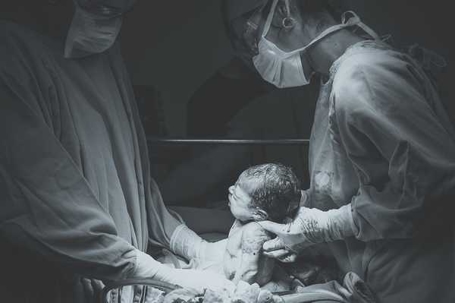Spastic cerebral palsy is characterized as damage to the brain's motor cortex that causes increased muscle tone, stiff joints, and jerky movements. This condition prevents normal development of motor function. It is often caused by a lack of oxygen in a child's brain during birth. Excessive uterine activity, such as too strong or too frequent contractions, affects the amount of oxygen that reaches the baby's brain. If the excessive uterine activity is prolonged, the baby can develop hypoxic ischemic encephalopathy (HIE), a type of brain damage that occurs when the baby's brain doesn't receive enough oxygen during birth. HIE is an often-preventable birth injury, and often stems from improper contraction monitoring and lack of intervention from nurses and doctors when the baby is in distress. It can have devastating, lifelong effects, such as spastic cerebral palsy. Spastic cerebral palsy can develop from HIE.
The different types of spastic cerebral palsy are categorized as spastic diplegia, hemiplegia, and quadriplegia. Spastic diplegia is caused by muscle tightness, most commonly affecting lower body motor function, hindering a child's ability to crawl, walk, and perform other activities. Spastic hemiplegia is characterized as one side of the body being in a constant state of weakness or contraction. Children with spastic hemiplegia can have difficulty walking, balancing, and using their hands for small tasks like writing. Spastic quadriplegia affects all four limbs on the body, face, and torso. Most children with spastic quadriplegia are unable to walk, have speech impairments, and are prone to seizures.
Signs and symptoms of cerebral palsy vary from one child to another, but the most common are:
Inability to completely extend joints
Tight muscles
Exaggerated movements
Crossed knees
Trouble speaking
Limited mobility
Jerky reflexes
Walking abnormality
Secondary signs of spastic cerebral palsy are brought on by co-occuring conditions that develop as part of the damage on the brain, not by the diagnosis of cerebral palsy. These secondary signs include:
Difficulty swallowing and eating
Constipation
Drooling
Involuntary urination
Acid reflux
Airway obstruction
Treatment options to minimize discomfort and to increase the child's mobility are physical therapy, occupational therapy, and speech therapy. However, these treatments can be very costly to the family. If your child was injured at birth and now lives with cerebral palsy, contact the attorneys at Daniel, Holoman & Associates LLP. We have extensive experience seeking justice and compensation for the victims and families of birth injuries, which can help pay for the extremely costly lifelong care that is required. There is no charge to speak with someone about your case , and our firm only gets paid if we recover compensation for your claims.

